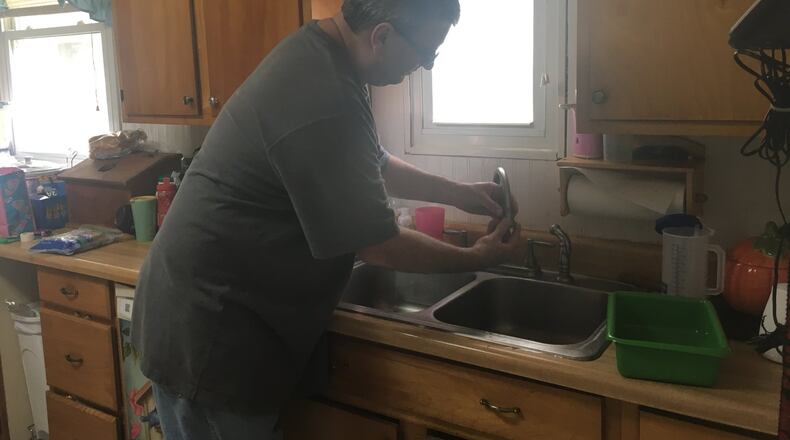PCE is a man-made chemical that is widely used for dry cleaning clothes and degreasing metal, according to the Ohio EPA.
RELATED : Solvent in Donnelsville wells poses health risk - Springfield News-Sun
A report by the agency said “a manufacturing corporation, located in the center of town, has been identified as a potentially responsible party based on historical practices.”
As a result, the EPA installed drinking water treatment systems in 2011 at the homes and the community park. The Clark County Combined Health District became involved as a community liaison because some residents were reluctant to have their water tested, according to Larry Shaffer, the environmental director with the health district.
“Some people were very happy to have their water tested to find out what the risks to their health were,” Shaffer said.
Later, air strippers were installed in the homes.
“What that does is expose the drinking water to air where the volatile organic compound evaporates away to safe levels,” Shaffer said.
Shawn Campbell lives in village. His well was one of many that was affected by the cancer-causing compound. It concerned him then and it concerns him now.
“Well, we had a few more kids than we do now at the house. The fact that they have been drinking it, bathing in it, a lot of consumption over the years, had me very concerned,” Campbell said.
In 2016, the Ohio EPA discovered two other wells were contaminated with PCE above the normal level. New systems were installed with granulated carbon units because they were more reliable, Shaffer said. Which prompted the village to take a look at a public water source system.
Robert Cornwell is the mayor of the village and says the entity is moving to change its source. A solicitor is drafting an ordinance for the village to adopt. The draft has to be read three times before it is voted and adopted he said.
The new system will be costly but the village will not incur any of it because federal and state funding will pay for it. However, It will require 100 percent participation, from residents, to move to a public water system.
Campbell said he looks forward to a new system but added he hoped the cost for residents is reasonable.
About the Author
